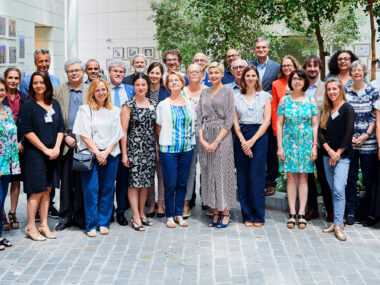Scientists offer up ideas for running rare disease clinical trials in EU
Innovative trial designs, using real-world data may help, paper suggests
Written by |

Running clinical trials for any rare disease is difficult, but steps like using innovative trial designs and taking advantage of real-world data can help facilitate these important studies across all rare conditions.
That’s according to a new paper titled “Rare disease clinical trials in the European Union: navigating regulatory and clinical challenges,” which was published in the Ophanet Journal of Rare Diseases.
The work is “proposing multifaceted solutions to implement effective rare disease clinical trials in the region,” its authors wrote.
Randomized-controlled clinical trials, or RCTs, have long been considered the gold standard for testing new medications. In most RCTs, patients are randomly assigned to receive an experimental therapy or a placebo, and then are monitored to see how the treatment affects specific measurements.
This setup can work really well for disorders that affect lots of people. However, for very rare disorders like AADC deficiency, which has an incidence of 1 in 116,000 among newborns in the EU, it’s a different story. The very fact that diseases like AADC deficiency are so rare makes it difficult or impossible to recruit the number of patients that are normally included in RCTs, meaning that standard methods for running these trials and interpreting the results are often not usable.
Team notes trend toward more rare disease clinical trials in EU
Now, two scientists in India conducted a review of the scientific literature to highlight the challenges of running clinical trials for rare diseases, with a particular focus on trials in the European Union.
The pair noted that, over the past decade or two, there has been a trend toward increasing numbers of rare disease studies in the EU. This is likely attributable to policies that the EU has put in place to incentivize companies to invest in rare disease research, according to the scientists. For one example, experimental therapies for rare diseases may be eligible to receive orphan drug designation, which guarantees the developer 10 years of market exclusivity if the treatment is ultimately approved in the EU.
Although these policies seem to have been effective in getting companies to invest in rare disease treatments, this tends to come at the cost of high drug prices, which can make it hard for some patients to access medications even though they are approved, the scientists said. As such, regulators are faced with a careful balancing act of trying to incentivize companies to invest in rare diseases while also ensuring the accessibility of important medicines for patients.
In addition to highlighting obstacles in rare disease treatment development, the researchers also offered suggestions for practical ways that rare disease clinical trials could be run more effectively. One strategy is to take advantage of natural history data — that is, data on how a disease progresses in the absence of treatment —and data from real-world studies to help inform trial design and interpret results. In some cases, external data may even be used as a comparison instead of a placebo group, though this requires careful statistical analyses to ensure accurate comparisons.
“By harnessing [these] data, researchers can significantly enhance the design of clinical trials for rare diseases,” the scientists wrote. “This will lead to the development of more effective therapies in the EU, enable informed regulatory approvals, and pave the way for improved patient outcomes.”
It is important to engage the currently known patient population through patient advocacy groups, outreach programs, and advertisements while designing clinical trials.
Another key aspect of conducting effective rare disease clinical trials is using innovative and adaptive trial designs, per the duo. In one suggestion, the researchers recommended performing analyses of available data midway through a study, then tweaking the study’s design based on the results of the interim analyses. These types of adaptations “increase flexibility and acceptability and maximize the trial’s potential based on gathered data,” the researchers said.
The scientists also highlighted the need for logistical support in rare disease trials. This includes close communication between different centers where trials are performed, and collaboration with advocacy groups and patient registries to help identify people with rare diseases who might be willing and able to participate in studies.
“It is important to engage the currently known patient population through patient advocacy groups, outreach programs, and advertisements while designing clinical trials,” the team wrote, adding that “continued collaboration between stakeholders, including researchers, clinicians, regulators, patient advocacy groups, and industry is required to foster continuous innovation.”






